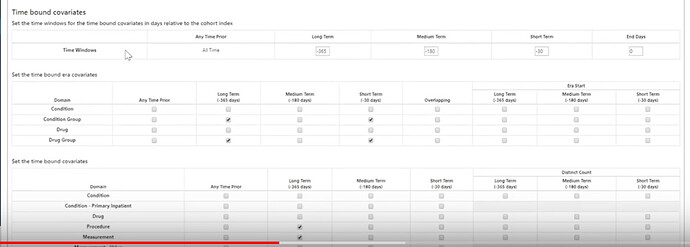Hello Everyone,
I was watching tutorials on Atlas for PLP and PLE packages.
I understand covariates are nothing but the characteristics of patient and we try to understand their influence in predicting the outcome. For ex: Age can be used to know whether it has any influence on patient becoming sick or not.
Can you please help me understand what are “Time bound covariates” ex: 365d long term,180d Medium term. with a simple example and explanation please ?
I am not able to get these terms and your response would be helpful
Thanks
Selva

